
 |
PEOPLE |
|
|
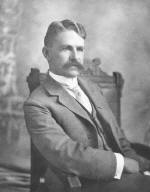 |
1890s
Dr. Heman R. Bull
moved west as a young doctor. He came to Grand Junction in 1887, and
practiced here until his death in 1934. Dr. Bull was a promoter of St.
Mary�s Hospital when it began in 1896, and a founder of the Mesa County Medical
Society. He delivered thousands of babies. |
|
|
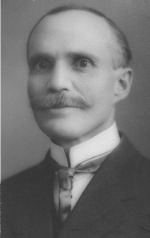 |
1900s James Bucklin was a lawyer, a founder of Grand Junction, and a stockholder in the Town Company. New ideas in politics and government intrigued Bucklin and he promoted the unusual Preferential Voting System, in use here from 1909 to 1922. Citizens voted for everyone running for an office, in the order of the voter�s preference. Winners were those who tallied the largest number of high preference points. This innovation gained Grand Junction national and international attention. |
|
|
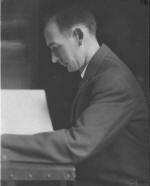 |
1910s Richard E. Tope was a school administrator. �Professor Tope� was admired as a cultivated gentleman of wide learning who recruited an outstanding staff of teachers, and set a standard of excellence. Mr. Tope was principal of the high school 1911-1918, and then superintendent of schools until 1938. On retirement he was appointed superintendent emeritus and consultant. |
|
|
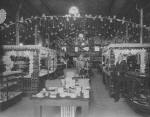 |
1920s William J. Moyer, shown near a Christmas display in the Fair Store, became the leading citizen of Grand Junction. The Fair Store opened in 1890 and was the largest department store in Western Colorado. His other major investments included the Grand Valley National Bank. Mr. and Mrs. Moyer were generous with their wealth. They financed young people through college and donated the city�s first public swimming pool, the Moyer Natatorium. Unfortunately, the Great Depression of the 1930s brought financial ruin to the Moyer enterprises. |
|
|
|
|
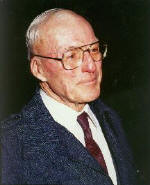 |
1940s Army Captain Phillip Couzens Leahy headed a project which had international impact. Few people knew of this at the time, because it was part of the government's secret Manhattan Project which developed the atomic bomb. From March, 1943 to March, 1946 he directed the discovery, refining and procurement of uranium from the Colorado Plateau for atomic research. He became the first manager of the Atomic Energy Commission Compound from 1947 to 1949. (T. McGill Photo, U.S. Department of Energy) |
|
|
|
|
 |
1950s Wayne Aspinall was the U.S. Congressman from this District from 1949 to 1973, becoming chairman of the powerful House Interior and Insular Affairs Committee in 1959. Serving until 1973, he was chairman in this important post longer than any other congressman. Dams, reclamation, mining and forestry are crucial to the West, and he was vigilant in promoting those interests. A masterful legislator, he managed over 1,000 bills in the House, and every one passed. |
|
|
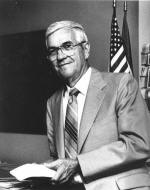 |
1960s Dale Hollingsworth was manager of the Grand Junction Chamber of Commerce from 1957 to 1968, and 1970 to 1984. As head of the Chamber, Hollingsworth was a leader in promoting the city and the area. Operation Foresight rejuvenated downtown, and the Chamber of Commerce was an important facilitator. (The Daily Sentinel) |
|
|
 |
1970s Jane Quimby was a busy citizen with a large family, who still made time for community involvement. She served on the City Council from 1973-1981 and was mayor 1979-1980, the first woman in that post. Jane Quimby also was a founder of the Grand Junction/Mesa County Riverfront Commission, and of the Western Colorado Community Foundation. (The Daily Sentinel) |
|
|
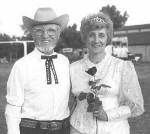 |
1980s Ted and Maxine Albers were King and Queen of the Grand Junction Centennial celebrations in June 1982. Both made an impact in many civic areas. Ted was president of Mesa College 1970-1974. Maxine was the first woman Mesa County Commissioner 1974-1989, serving five terms as chairman of the Board of County Commissioners. (Judy Armstrong Photo) |
|
|
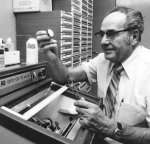 |
1990s Dr. Geno Saccomanno arrived in 1947 to start the pathology departments at St. Mary's Hospital, and at the V.A. Medical Center. The Saccomanno techniques and the equipment he developed, which detected links between uranium radiation and lung cancer, were innovative and profound. They brought Dr. Saccomanno international acclaim and honors. In the 1990s especially, he and his family were generous as philanthropists. (The Daily Sentinel) |
|
|
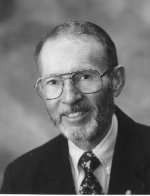 |
2000 & Beyond Herbert Bacon and the Bacon Family Foundation are benefactors of many worthy community causes. Banker E. L. Bacon and his family moved to Grand Junction in 1948. Sons Herbert and the late LeRoy were chairmen of two banks, and major figures in furthering the development of a vibrant city and region. (David Canaday Photo, all rights reserved) |
|
|
|
|
If you have
arrived at this page from a search engine |
|